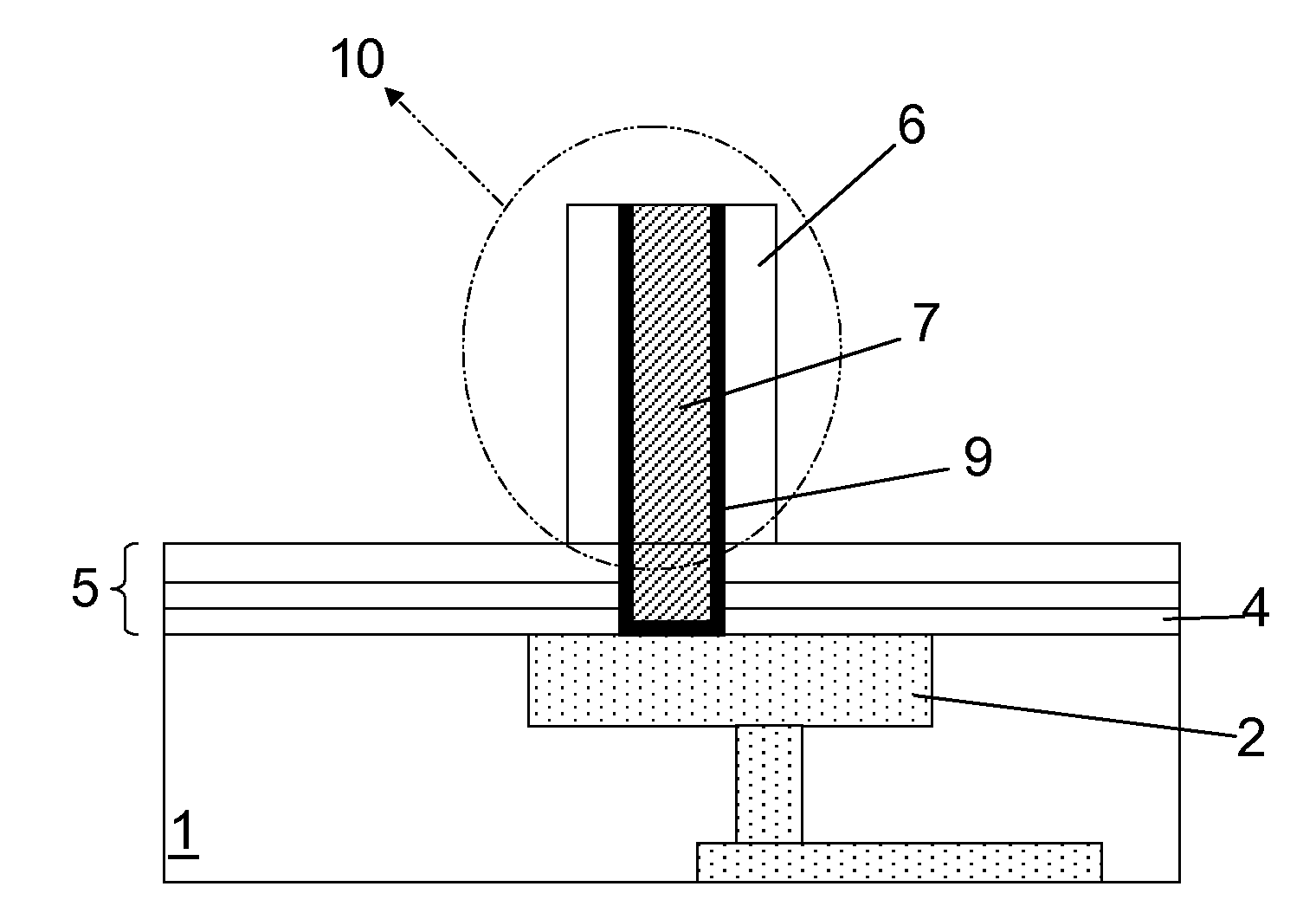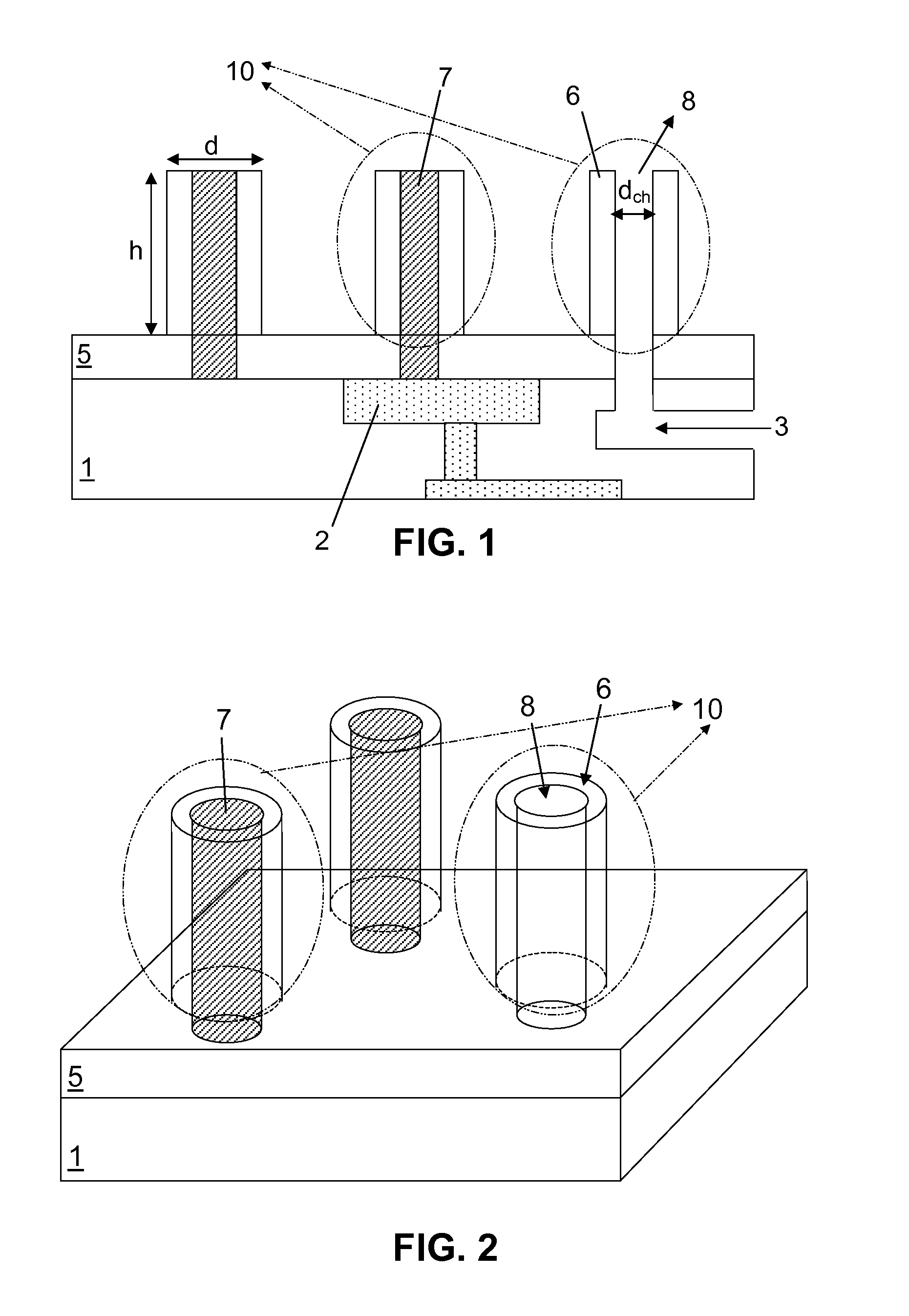CMOS Compatible Microneedle Structures
a micro-needle and connector technology, applied in the field of electromechanical devices, can solve the problems of limiting the functionality of in vitro experiments on small cells, less efficient electrical coupling, and large sensors
- Summary
- Abstract
- Description
- Claims
- Application Information
AI Technical Summary
Benefits of technology
Problems solved by technology
Method used
Image
Examples
example 1
[0140]Microneedles 10 with a width of approximately 250 nm and a height of 1 μm were produced using a Cu damascene approach. The microneedles 10 were further oxidized or electroplated with a noble metal to prevent Cu-induced cytotoxicity.
[0141]Cu microneedles 10 comprising a SiO2 isolation layer 6 have been made using CMOS processing techniques. The different processing steps are described below. The steps refer to the steps as presented in FIG. 11.
[0142]First (see FIG. 11(a)) 8″ Si wafers 31 with a Cu damascene metal pattern 32 in a SiO2 dielectric 33 were created. The pads in this Cu damascene metal layer 32 are acting as base on which the microneedles 10 will be formed. On top a layer 34 of 50 nm SiC was deposited. The SiC layer 34 will act as a diffusion barrier between the Cu and the underlying electronic circuitry 32 (Cu diffusing in the liquid is toxic for the cells) and is also used as an etch stop layer.
[0143]Subsequently, a layer 35 of oxide was deposited (see FIG. 11(b))....
PUM
 Login to View More
Login to View More Abstract
Description
Claims
Application Information
 Login to View More
Login to View More - R&D
- Intellectual Property
- Life Sciences
- Materials
- Tech Scout
- Unparalleled Data Quality
- Higher Quality Content
- 60% Fewer Hallucinations
Browse by: Latest US Patents, China's latest patents, Technical Efficacy Thesaurus, Application Domain, Technology Topic, Popular Technical Reports.
© 2025 PatSnap. All rights reserved.Legal|Privacy policy|Modern Slavery Act Transparency Statement|Sitemap|About US| Contact US: help@patsnap.com



